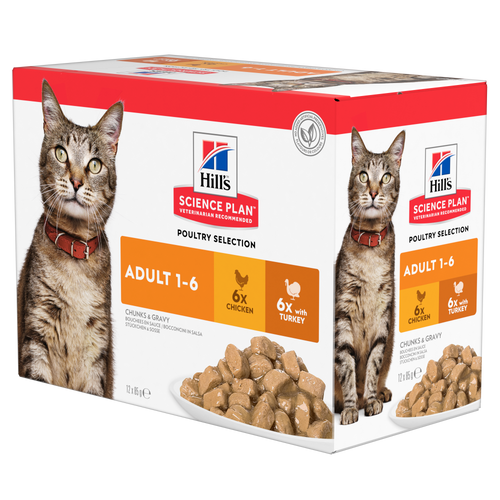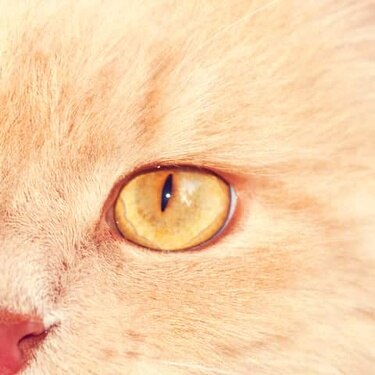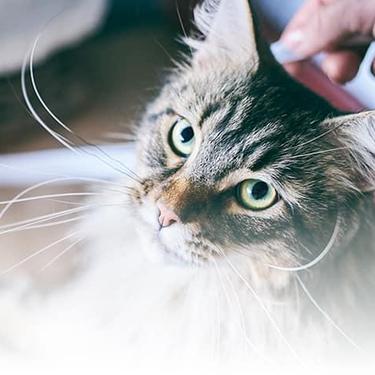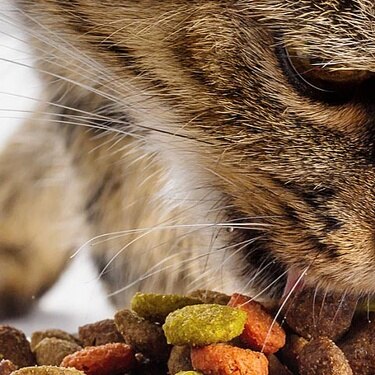
-
Find the right food for your petTake this quiz to see which food may be the best for your furry friend.Find the right food for your petTake this quiz to see which food may be the best for your furry friend.Featured products
 Adult Wet Dog Food with Beef
Adult Wet Dog Food with BeefHill's Science Plan Adult Multipack Wet Dog Food with Chicken, Beef & Turkey are complete premium pet foods for adult dogs from 1 year. Your dog will love these deliciously smooth and savoury minced loaves, formulated for balanced nutrition and overall health.
Shop Now Puppy Food
Puppy FoodHill's Science Plan Puppy Multipack Wet Dog Food with Chicken & Beef are complete premium pet foods for growing puppies from weaning until 1 year old and for pregnant and nursing dogs. Your puppy will love these deliciously smooth and savoury minced loaves, formulated for balanced nutrition and overall health.
Shop Now Mature Adult Dog Food
Mature Adult Dog FoodHill's Science Plan Mature Adult Multipack Wet Dog Food with Chicken & Beef are complete premium pet foods for mature adult dogs from 7 years. Your dog will love these deliciously smooth and savoury minced loaves, formulated to deliver the appropriate amount of energy to support the needs of adult dogs.
Shop NowFeatured products Light Adult Multipack Wet Cat Food with Chicken & Ocean Fish
Light Adult Multipack Wet Cat Food with Chicken & Ocean FishTender chicken chunks in gravy for cats, with L-carnitine and fewer calories for ideal weight management. Packed with high-quality protein, omega-6s, and vitamin E for shiny fur and healthy skin.
Shop Now Mature Adult Wet Cat Food with Chicken
Mature Adult Wet Cat Food with Chicken
Tender chicken chunks in gravy for mature adult cats. Made with easy-to-digest ingredients, high-quality protein for lean muscle maintenance and antioxidant vitamins C+E for optimal health.
Shop Now Adult Multipack Wet Cat Food with Beef, Ocean Fish & Chicken
Adult Multipack Wet Cat Food with Beef, Ocean Fish & ChickenTender chunks in gravy for cats, with high-quality protein to maintain lean muscle. With vitamin E and omega-3s & -6s for healthy skin and balanced minerals to support healthy vital organs.
Shop Now -
Dog
- Dog Tips & Articles
-
Health Category
- Weight
- Food & Environmental Sensitivities
- Urinary
- Digestive
- Joint
- Kidney
-
Life Stage
- Puppy Nutrition
- Adult Nutrition
- Senior Nutrition
Cat- Cat Tips & Articles
-
Health Category
- Weight
- Skin & Food Sensitivities
- Urinary
- Digestive
- Kidney
-
Life Stage
- Kitten Nutrition
- Adult Nutrition
Featured articles The Incredible Science Behind Your Pet's Microbiome
The Incredible Science Behind Your Pet's MicrobiomeLearn what your pet's microbiome is, how it contributes to your pet's gut and overall health, and why nutrition is important in maintaining healthy microbiomes.
Read More Show some love with wet foods: a great choice for pets with health issues
Show some love with wet foods: a great choice for pets with health issuesShow some love with wet foods: a great choice for pets with health issues.
Read More The Right Diet For Your Pet
The Right Diet For Your PetIn people, the right diet is very important. If you are eating the wrong way for your metabolism, activity level, age and lifestyle you could end up with health issues.
Read More -


While what to feed may be clear (balanced food appropriate to your cat’s life-stage and energy requirements), there are several opinions on which feeding method is best. Many experts do agree that free-feeding, also called “ad lib feeding” or “free-choice feeding”, is less than ideal for several reasons, including:
- In multi-cat households it is nearly impossible to ensure that one cat is getting enough while preventing other cats from eating too much.
- A full dish of food left out all day can encourage competitive behaviour or become a source of conflict in a multi-cat household
- It’s difficult to monitor changes in eating behaviour, often a distress signal in cats.
- It can encourage overeating, which can lead to excessive weight gain. Gaining too much weight will put your cat at risk for significant health problems such as osteoarthritis and diabetes mellitus.
- Cats can still gain weight on “weight loss” or calorie-controlled food if they overeat.
How you feed your cat is important to their health and quality of life
Since cats generally prefer eating smaller meals more often throughout the day, many experts recommend measuring out a daily ration based on the information given on the food label and dividing it into several small servings throughout the day. This is commonly called “portion feeding” or “measured feeding” and will satisfy the natural instinct for small, frequent meals, but avoid the inherent dangers that can accompany overfeeding.
Of course, for some cats – such as seniors, cats with a medical condition or growing kittens – free-feeding may in fact be a good choice. Ask your vet for feeding advice tailored for your individual feline friend.
Read the label
Cat food packaging will usually show a simple chart outlining just how much to feed based on your cat’s weight. While lifestyle certainly comes into play the recommended feeding amount for your cat’s weight as listed on the label is the best starting point. It’s easy to adjust from there or ask your vet for feeding advice if you feel that your cat is unintentionally gaining, or even losing, weight. If you want your cat to slim down, simply feed the amount listed for her ideal weight instead of her current weight.
Those who like to mix food types - dry kibble and wet food – will still find it quite easy to portion the food. Hill’s dry cat food labels include information on mixing food types for the optimum health of your cat, making it easy for you to feed in the manner that you choose.


Tasty Tips
Keep it simple
If you’ve been free-choice feeding your cat and would like to switch to measured or portion feeding, it is important to make it easy on yourself. Here are a few simple tips for success:
- Find the appropriate measuring tool: Whether it's a simple measuring cup or a stylish silver scoop, be sure that the size is right. Choose something that, when full or filled to a specific line, is just the amount your cat needs. This makes feeding quick and easy, and helps avoid the subjective “eyeballing” approach that can vary depending on which family member is doing the feeding.
- Portion it out: Many owners find it useful to measure a daily amount into a cat-proof container (keeping a separate one for each cat), including any treats, and feed only what’s in the container each day. Use a chic glass jar or a simple plastic container that’s easy to clean – whatever you’ll enjoy using.
- Treat sensibly: If you like to give your cat treats, be sure to calculate them into the daily calorie intake to avoid caloric surprises that lead to weight gain. Read treats packaging labels for appropriate amounts and calorie info.
Save yourself some time
Feel like you haven’t got the time or schedule for multiple feedings? Try hiding meals for your cat to find later. While your cat is preoccupied with snoozing (or eating breakfast) take a minute to hide several small meals around the house - on top of the bookcase, along the windowsill – feel free to get creative here. Hide food in places your cat frequents and can access freely. Actively searching and fulfilling their hunting instincts is a fun way to feed, but really only works with dry food since wet food may spoil if it sits out too long.
Counting cats?
While a single cat can be fed a daily portion once per day that’s left out for them to nibble as desired, multiple cat households operate differently. Find a quiet out-of-the-way spot for each cat, well out of sight of the others, to avoid greed or aggression issues. Supervise mealtime to be sure there are no greedy cats in the crowd who may push a more timid housemate out of the way. By supervising, you will also stay on top of any changes in feeding habits. In multi-cat households, this is important since these changes can often be one of the few clearly recognisable signs of stress or a health related issue.


One of our staff authors prepared this article for you
Related products

Tender chunks in gravy for cats, with high-quality protein to maintain lean muscle. With vitamin E and omega-3s & -6s for healthy skin and balanced minerals to support healthy vital organs.

Tender chicken chunks in gravy for mature adult cats. Made with easy-to-digest ingredients, high-quality protein for lean muscle maintenance and antioxidant vitamins C+E for optimal health.


Tender chicken chunks in gravy for cats, with L-carnitine and fewer calories for ideal weight management. Packed with high-quality protein, omega-6s, and vitamin E for shiny fur and healthy skin.
Related articles

Chocolate is known to be poisonous for dogs, but it can also be toxic for cats. Learn why chocolate is bad for cats & what to do if she's eaten it.

There are three common ways to feed a cat. Each way has its advantages and disadvantages.

Learn how to make homemade cat treats that are healthy for your pet with this recipe from Hills Pet Nutrition.

From essential vitamins & minerals to different types of meat, learn what to look for when choosing the best cat food for your feline.

Put your cat on a diet without them knowing
Our low calorie formula helps you control your cat's weight. It's packed with high-quality protein for building lean muscles, and made with purposeful ingredients for a flavourful, nutritious meal. Clinically proven antioxidants, Vitamin C+E, help promote a healthy immune system.
Put your cat on a diet without them knowing
Our low calorie formula helps you control your cat's weight. It's packed with high-quality protein for building lean muscles, and made with purposeful ingredients for a flavourful, nutritious meal. Clinically proven antioxidants, Vitamin C+E, help promote a healthy immune system.

